Snails in the Milky Way Disk Phase Space
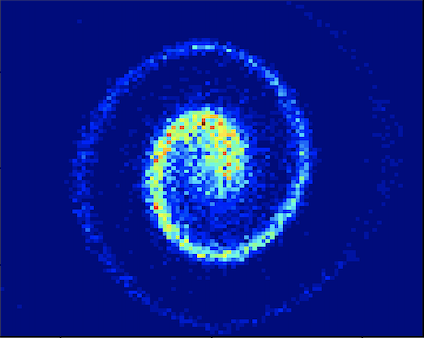 I am doing my first year project at Columbia with Prof. Kathryn Johnston
focusing on the phase-space spirals in the Milky Way disk. These spirals
were discovered by
Antoja et al. (2018). Since then, researchers have discovered just how
prevalent these spirals are and various possibilities have been proposed
for their cause, including perturbations from Sagitarrius or bar buckling.
We are using a new method to analyze these spirals with more detail than ever
before, yielding a deeper understanding of dynamics in the disk. This project
is currently in the early stages and I'm excited about where its heading.
I am doing my first year project at Columbia with Prof. Kathryn Johnston
focusing on the phase-space spirals in the Milky Way disk. These spirals
were discovered by
Antoja et al. (2018). Since then, researchers have discovered just how
prevalent these spirals are and various possibilities have been proposed
for their cause, including perturbations from Sagitarrius or bar buckling.
We are using a new method to analyze these spirals with more detail than ever
before, yielding a deeper understanding of dynamics in the disk. This project
is currently in the early stages and I'm excited about where its heading.
The GD-1 Stream
 I am currently working on an analysis in Gaia's DR3 of the GD-1 stream with Dr. Adrian
Price-Whelan. GD-1 is a great laboratory for stream-perturber simulations
because it is relatively close to us, it is a very long stream (120 degrees!)
and it is very bright. It also has some complex features like a spur (a
bifurcation in the stream track) and some gaps. I am creating a purer and
more complete catalog of GD-1 members and then modeling the perturber which
caused the spur and these gaps.
I am currently working on an analysis in Gaia's DR3 of the GD-1 stream with Dr. Adrian
Price-Whelan. GD-1 is a great laboratory for stream-perturber simulations
because it is relatively close to us, it is a very long stream (120 degrees!)
and it is very bright. It also has some complex features like a spur (a
bifurcation in the stream track) and some gaps. I am creating a purer and
more complete catalog of GD-1 members and then modeling the perturber which
caused the spur and these gaps.
The Phoenix Stream
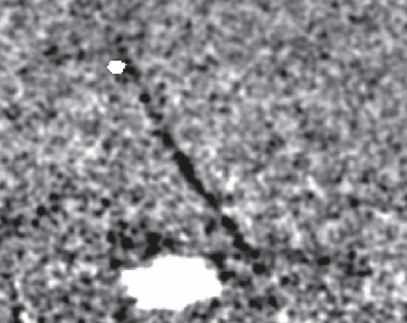 During my undergrad at the University of Chicago, I was advised by Prof.
Alex Drlica-Wagner. My
first completed project was an analysis of the Phoenix stellar stream
using Dark Energy Survey (DES) data by fitting a non-parametric spline model
to the density, track, and width of the stream. We found that Phoenix has
structure on smaller scales than other similarly modeled streams. If a dark
matter subhalo caused those perturbations, the required low mass of the subhalo
could help constrain the nature of dark matter!
During my undergrad at the University of Chicago, I was advised by Prof.
Alex Drlica-Wagner. My
first completed project was an analysis of the Phoenix stellar stream
using Dark Energy Survey (DES) data by fitting a non-parametric spline model
to the density, track, and width of the stream. We found that Phoenix has
structure on smaller scales than other similarly modeled streams. If a dark
matter subhalo caused those perturbations, the required low mass of the subhalo
could help constrain the nature of dark matter!
The Palomar 13 Stream
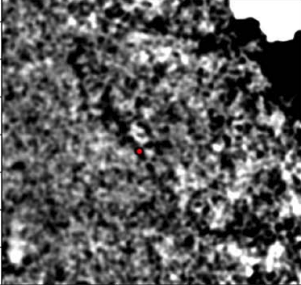 In a project led by Dr. Nora Shipp, we
discovered tidal tails around the globular cluster Palomar 13
When confirmed, this will be one of the only streams for which we have a
known progenitor, which can greatly help constrain the orbit. Getting the
right orbit is crucial for increasing our understanding of the Milky Way
potential and the way structure moves within and interacts with the dark matter halo.
In a project led by Dr. Nora Shipp, we
discovered tidal tails around the globular cluster Palomar 13
When confirmed, this will be one of the only streams for which we have a
known progenitor, which can greatly help constrain the orbit. Getting the
right orbit is crucial for increasing our understanding of the Milky Way
potential and the way structure moves within and interacts with the dark matter halo.
Strong Lensing
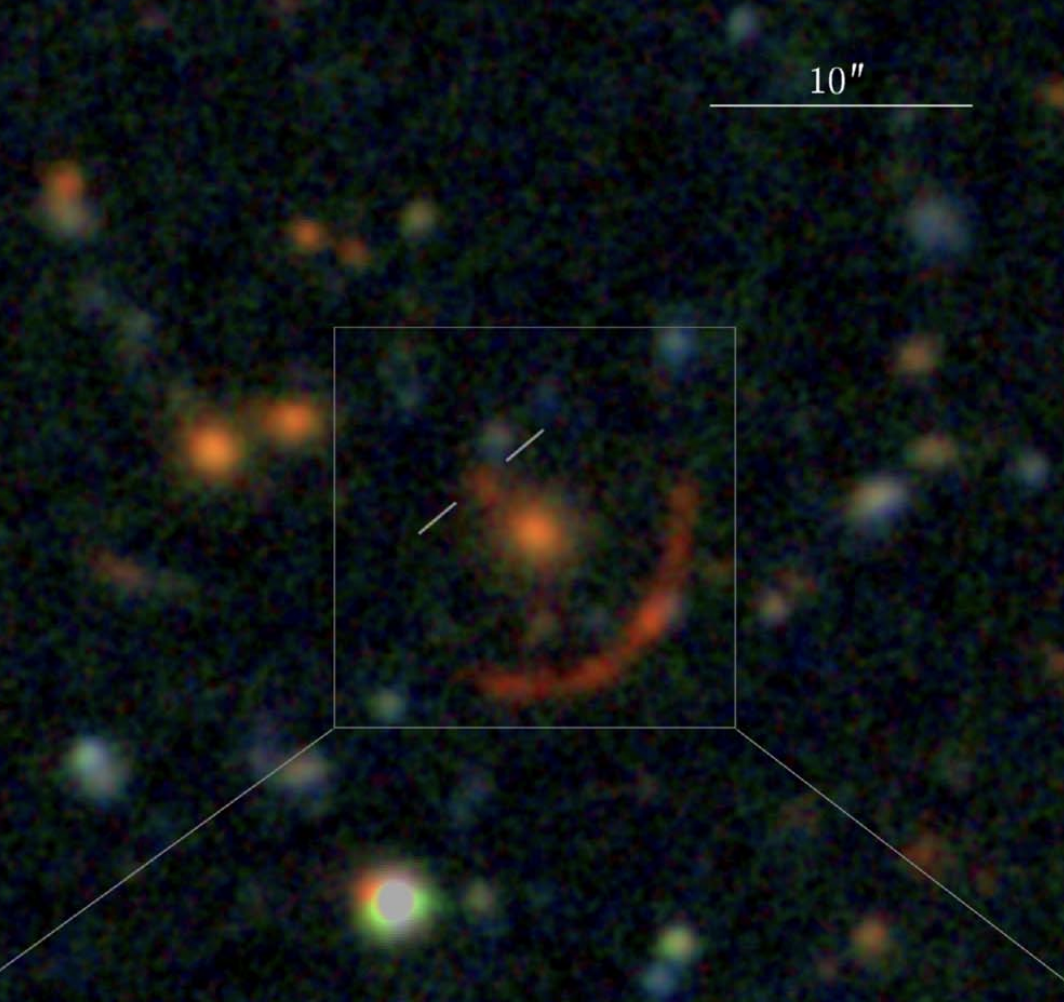 Chicago Optically-Selected Lenses - Located at the Margins of Public SURVEYSCOOL-LAMPS
(
COOL-LAMPS) is an awesome collaboration started by Prof. Mike Gladders and Dr.
Gourav Khullar at the University of Chicago. It consists of the ~10 students each
year that take the "Field Course in Astrophysics" course with Mike, who work together
on a strong lensing project, where Mike and Gourav are world-leading experts. I am
proud to have been a part of the first class, where we discovered the brightest z~5
galaxy in the universe! Since then, COOL-LAMPS has published a couple more papers and
the exciting thing is that the collaboration grows every year!
Chicago Optically-Selected Lenses - Located at the Margins of Public SURVEYSCOOL-LAMPS
(
COOL-LAMPS) is an awesome collaboration started by Prof. Mike Gladders and Dr.
Gourav Khullar at the University of Chicago. It consists of the ~10 students each
year that take the "Field Course in Astrophysics" course with Mike, who work together
on a strong lensing project, where Mike and Gourav are world-leading experts. I am
proud to have been a part of the first class, where we discovered the brightest z~5
galaxy in the universe! Since then, COOL-LAMPS has published a couple more papers and
the exciting thing is that the collaboration grows every year!
Globular Cluster Tails in DELVE
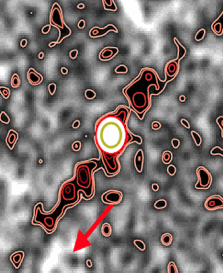 The DECam Local Volume Exploration (DELVE) Survey is a survey of the entire southern sky
not covered by DES, in an effort to achieve uniform coverage of half the sky. I am
working with Dr. Ani Chiti looking for envelopes and tails around any globular cluster
in the DELVE footprint. This should give us a better understanding of how globular clusters
form streams and how prevalent this process is.
The DECam Local Volume Exploration (DELVE) Survey is a survey of the entire southern sky
not covered by DES, in an effort to achieve uniform coverage of half the sky. I am
working with Dr. Ani Chiti looking for envelopes and tails around any globular cluster
in the DELVE footprint. This should give us a better understanding of how globular clusters
form streams and how prevalent this process is.
High Proper Motion Stars in DES
I have recently started collaborating with Dr. Gary Berstein and his students to work on finding high proper motion objects in the Dark Energy Survey. This is a longer term effort that will prove even more important when applied to the Legacy Survey of Space and Time (LSST) since that will allow us obtain accurate proper motions for stars deeper than Gaia can see.